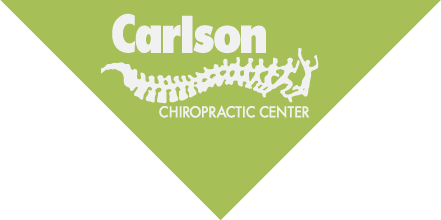What is sciatica? This common condition affects more than 3 million people each year in the United States. Sciatica rarely occurs before age 20 and is most likely to develop around age 40 or 50.
Sciatica can cause serious pain that starts in the spine and typically extends down the back of the leg. Sciatic nerve pain can be excruciating and debilitating, sometimes making standing or sitting difficult or impossible.
What is the Sciatic Nerve?
The longest single nerve in the body, the sciatic nerve, is actually a bundle of five nerves that exit from the lumbar spine and sacrum. These nerves group together around the piriformis muscle in the buttocks to form one large sciatic nerve, which then travels down the back of the leg. The sciatic nerve provides strength and sensation to the legs and connects major muscles with the spinal cord.
Sciatica symptoms occur when the sciatic nerve is irritated or compressed at or near its point of origin, which can be muscle weakness, constant pain in only one side of the buttock or leg (rarely in both legs) radiates down the leg and possibly into the foot and toes, pain that is worse when sitting, leg pain that is often described as burning, tingling, or searing (versus a dull ache), weakness, numbness, or difficulty moving the leg, foot, and/or toes, or a sharp pain that may make it difficult to stand up or walk.
Causes
- Lumbar Herniated Disc
This occurs when the soft inner material of the disc leaks out, or herniates, through the fibrous outer core and irritates or pinches the nerve root. Sciatica is the most common symptom of a lumbar herniated disc. - Degenerative Disc Disease
While some level of disc degeneration is a natural process that occurs with aging, for some people one or more degenerated discs in the lower back can also irritate a nerve root and cause sciatica. Bone spurs, which may develop with spinal degeneration, also may press against a nerve, resulting in pressure on the nerve. - Spondylolisthesis
This condition occurs when a small stress fracture allows one vertebral body to slip forward on another; for example if the L5 vertebra slips forward over the S1 vertebra. With a combination of disc space collapse, the fracture, and the vertebral body slipping forward, the space where the nerve exits the spinal canal can become smaller and pinch or irritate the nerve. - Lumbar Spinal Stenosis
This can cause sciatica due to a narrowing of the spinal canal. Lumbar spinal stenosis is related to natural aging in the spine and is relatively common in adults older than age 60. The condition typically results from a combination of one or more of the following: enlarged facet joints, overgrowth of soft tissue, and/or a bulging disc placing pressure on the nerve roots. - Piriformis Syndrome
The sciatic nerve can get irritated as it runs under the piriformis muscle in the buttock. If the piriformis muscle irritates or pinches a nerve root that comprises the sciatic nerve, it can cause sciatica-type pain. - Sacroiliac Joint Dysfunction
Irritation of the sacroiliac joint—located at the bottom of the spine—can also irritate the L5 nerve, which lies on top of the sacroiliac joint, causing sciatica-type pain. - Other Possible Irritants
Pregnancy, which can add a severe strain on the spine, excess weight, not exercising on a regular basis, high heels, or sleeping on a mattress that is too soft.
Certain sciatica symptoms, while rare, require immediate medical, and possibly surgical, intervention. These include, but are not limited to, progressive neurological symptoms (e.g. leg weakness) and/or bowel or bladder dysfunction (cauda equina syndrome). Infection or spinal tumors can also cause sciatica. Thankfully, sciatic nerve pain relief can be also obtained by visiting your chiropractor.
Treatment Options
- Adjustments (Spinal Manipulations)
Spinal adjustments are at the core of Chiropractic care. Manipulation frees restricted movement of the spine and helps to restore misaligned vertebral bodies to their proper position in the spine. Adjustment techniques vary from a swift high-velocity thrust to those that combine minimal force and gentle pressure. - Decompression Therapy
Decompression works by gently stretching the spine, creating a vacuum effect which can restore disc height and even reduce the severity of bulging disc conditions. This can decrease the pressure on the nerve. - Ice/Cold Therapy
This sciatic nerve pain treatment reduces inflammation and helps control sciatic pain.
Contact Us Today to End Your Sciatic Nerve Pain
A Chiropractor examines the patient and reviews medical history to determine what is causing the patient’s sciatica pain. It is the job of the Chiropractor to use the right modality to treat the specific cause of your sciatic pain or refer when surgery is necessary.
Chiropractic treatment is based on the principle that restricted spinal movement leads to pain and reduced function. Chiropractic care helps the body by removing the interference to the body’s ability to heal itself. Find out how Carlson Chiropractic sciatica treatment can benefit you today!

